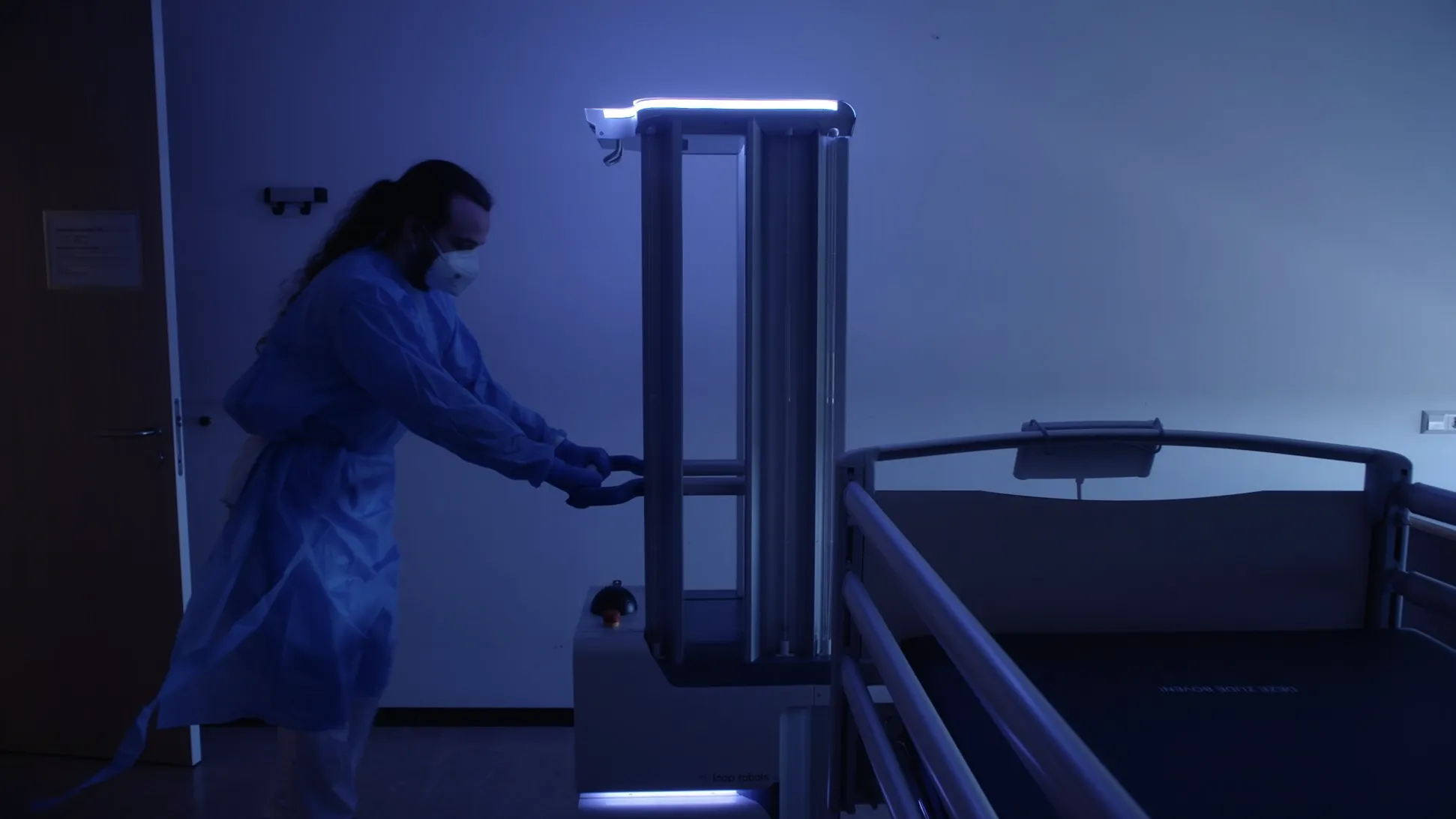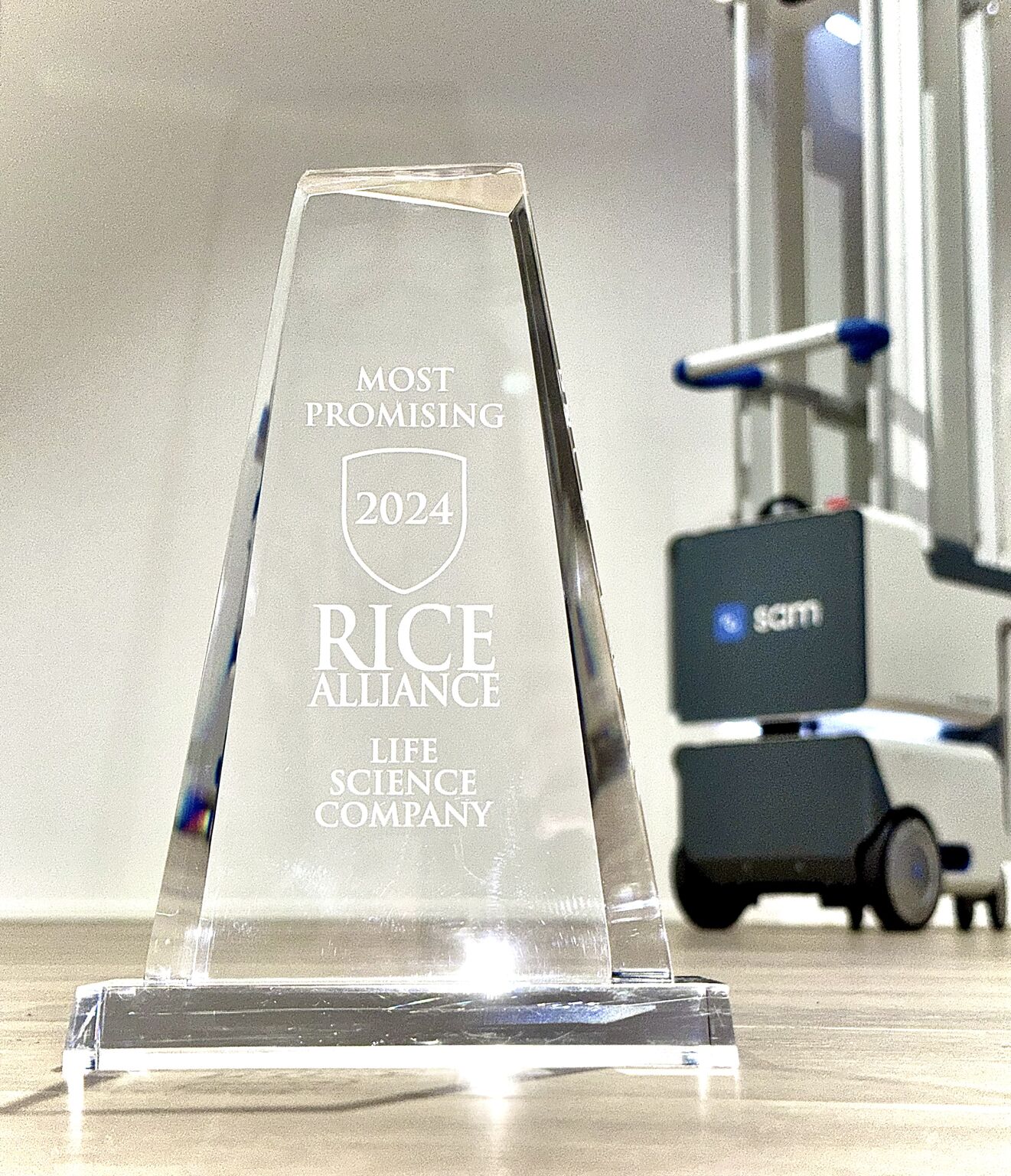Ultraviolet germicidal irradiation (UVGI) has been employed for disinfection since the late 1800s. In 1903, Niels Ryberg Finsen was awarded the Nobel Prize for Medicine for his use of UV light in treating diseases, especially tuberculosis.
Ultraviolet (UV) is a form of electromagnetic radiation with wavelength shorter than that of visible light, but longer than X-rays. UV radiation is present in sunlight, and constitutes about 10% of the total electromagnetic radiation output from the Sun. UV light is divided into three types:
UV-A
UV-B
UV-C
Each of the three types has different wavelenghts (frequencies) with UV-C having the highest energy photons with wavelengths between 100-280 nm and is completely absorbed by the ozone layer and atmosphere, thus is not present naturally on Earth. UV-C light at 254 nm has potent germicidal properties, which makes it very powerful for disinfection of air and surfaces.
Manual surface disinfection is complicated, time-consuming, error-prone, non-repeatable, and impossible to control. Chemical disinfection products are harmful to staff & the environment and pose a risk of biocide resistance.
Wavelengths between about 200 nm and 300 nm are strongly absorbed by nucleic acids. The light energy absorbed by the DNA or RNA result in defects called pyrimidine dimers a form or direct damage to the genetic material.
Pyrimidine dimers are molecular lesions formed from thymine or cytosine bases in DNA via photochemical reactions. UV-C light induces the formation of covalent linkages between consecutive bases along the nucleotide chain in the vicinity of their carbon–carbon double bonds. Pyrimidine dimers can prevent replication directly, or can prevent the expression of necessary proteins, resulting in the death or inactivation of the organism.
The manual disinfection process is hard:
Adequate distribution of the active substance
Correct contact time of the disinfectant for effective action
Replicability of the process
Compliance with protocols and policies
Insufficient time to do the job properly
Contamination of cleaning agents
Monitoring effectiveness
Faster
SAM disinfects a room within 15 minutes. The dry method leaves no residue and the room is immediately available after disinfection.
Safer
SAM disinfection is chemical free, protect your staff and environment from harmful chemicals. SAM Lowers the risk of biocide resistance.
Auditable
SAM gives inside in the disinfection process. Always know where and when a room has been disinfected.
Free Report
by Interagency Coordination Group on Antimicrobial Resistance. 2019
Drug-resistant diseases already cause at least 700,000 deaths globally a year. A figure that could increase to 10 million deaths globally per year by 2050 under the most alarming scenario if no action is taken.
Manual surface disinfection is complicated, time-consuming, error-prone, non-repeatable, and impossible to control. Chemical disinfection products are harmful to staff & the environment and pose a risk of biocide resistance.
Challenges of chemical disinfectants:
Ineffectiveness of some disinfectants against certain pathogens (e.g., C. diff. spores and Norovirus)
Toxicity to staff and the environment
Damage to hospital materials and equipment
Potential biocide/antibiotic resistance
Challenges of manual disinfection process:
Adequate distribution of the active substance
Correct contact time of the disinfectant for effective action
Replicability of the process
Compliance with protocols and policies
Insufficient time to do the job properly
Contamination of cleaning agents
Monitoring effectiveness






















